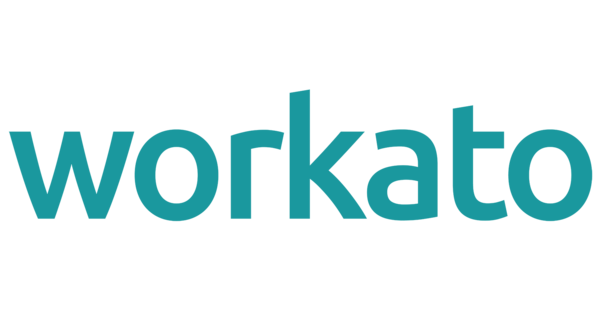Tell us about your role at Workato and the team you handle.
I’m the VP of Growth at Workato. The team I oversee is mostly marketing—from product to content—but it also includes our sales development team. I love walking around salestech events and seeing how the Salesforce ecosystem and its partners are growing.
Which event in 2018 had a big impact on your MarTech and SalesTech knowledge?
Dreamforce!
Every year, the best part of Dreamforce for me is meeting our customers. It’s just mind-blowing to have people stop by our booth and share how our platform has made their lives easier. Sometimes our customers even join us working the booth and introducing Workato to people coming to our booth. It’s just amazing to see this.
Part 1: 10 Sales Technology Options You Must Know in 2019
As for sessions, I was most excited to attend the Box fireside chat. We have a strong working relationship with Box, so it’s always cool to see what they’re doing internally to make processes more efficient.
Last year, Salesforce acquired Mulesoft. What does that say about the need for integration and automation?
On the whole, Salesforce’s acquisition of Mulesoft really validates the need for integration throughout the enterprise. When organizations evaluate SaaS solutions like Salesforce, one of the first things they want to know is: how will this app play with the rest of my tech ecosystem? In other words, businesses already know they need integration. Our CEO wrote a post on what that means for the integration space.
Automation, however, is different than integration. It’s not just about moving data back and forth, but about automating a workflow or business process. Nowadays, most business workflows require you to touch multiple apps to get something done. So what businesses need at present goes beyond integration – they also need the ability to automate workflows.
What’s the role of vendor-neutral platforms?
Businesses continue to choose applications and tools that are best for their specific need; they choose what’s best-of-breed. This makes it absolutely critical to have a vendor-neutral platform on the market that can work well across all applications. This not only gives businesses the chance to select the best applications/tools for their needs but a platform that they can rely on as those needs, applications, and tools change as well.
Read Also: Six Ways Brands Can Increase Lead Generation in 2019
How do you see integration evolving to meet the needs of digital businesses?
We see these big trends that are redefining the integration market for the digital businesses.
- The speed of adoption of cloud applications: Businesses are buying cloud applications at a rapid pace. As per the latest report by NetSkope, an enterprise on average uses over 1000 applications. This is causing data and process fragmentation faster than ever before. Workflows are also now fragmented across these apps; people have to work across multiple apps to get things done—which drives the need for workflow automation.
- AI/ML technologies are maturing: AI and ML technologies are at a point where they can be leveraged to make integrations better and more intelligent.
- Chat platforms are on the rise: People are spending more and more time and doing their work inside of chat platforms like Slack and MS Teams. This has spurred on the growth of bots that can enable users to perform workflows and get things done across apps—directly from the chat platform.
Read More: SalesTech Star Interview with Jon Miller, CEO & Co-Founder at Engagio
We see integration platforms going beyond just connecting to applications and moving data towards capitalizing on these trends to enable workflow automation, bots, and leveraging AI/ML to make integrations and automations intelligent.
“Integration” and “automation” can be intimidating jargons for non-IT folk. Do you think marketers have finally gotten their act together in their ways of using Automation and integration?
In recent years, the MarTech stack has exploded; the average marketing team uses 40+ applications. In order to streamline overall marketing and sales operations, these apps need to work with the CRM, sales development tools, and other applications used by sales teams. Integration and automation are crucial to a working MarTech stack; there’s just no way around that.
However, most of the integration and automation platforms available are either too simplistic to handle advanced integrations and automations—or they require an IT person to build and operate them. Thankfully, there are select modern integration and automation platforms that are easy to use and operate while providing the ability to handle advanced integrations and automation needs.
If not, what do you think is needed for them to take full advantage of these tools?
The main thing marketers need to be comfortable is an integration platform that is also a workflow automation platform and is easy enough to be used by marketing operations professionals. Basically, one place that supports their specific MarTech stack and that can handle all their integration and automation needs.
What emerging technologies are you most excited to watch over the next five years?
We are already seeing intelligent technologies (like AI, ML, and bots) starting to gain momentum. These technologies have significant and broad applicability across the board; every line of business, every vertical, and every consumer can benefit from these.
There’s been a lot of buzz about workstream collaboration tools like Slack. How do you see marketers and salespeople leveraging these platforms in the future?
I think the real potential of workstream collaboration apps like Slack is that you can use them as a central place to do work, whether you simply want to access information in other apps and make updates or whether you want to execute more complex workflows like approving expenses and marketing campaigns.
You can even run your entire sales deal desk from Slack! In each of these scenarios, workstream collaboration tools provide significant productivity gains and help marketing and sales stay on top of rapidly-changing priorities—which, for sales and marketing, is just about everything!
A great example of this is our friends at People.ai, who use Slack to receive actionable Marketo notifications. Whenever a lead takes a meaningful action—such as clicking on an email marketing CTA—the marketing team gets a message in Slack. They can then take actions without ever leaving the chat app. Not only is it really cool, but it helps them work more intelligently and get more done.
Similarly, we at Workato created a Slack-based deal desk for our sales team. They can log activity (like demos), update leads, and even submit pricing requests for approval, all without ever leaving Slack.
Do you have any tips for anyone evaluating an integration and automation platform?
For someone running marketing ops, the key things to look for in an integration and automation platform are:
Is this something that I myself can use to build and manage the integrations and automations? If you have to always go to someone in IT to get your job done, you won’t be able to get things done as fast as you’d like.
Is it flexible enough to accommodate all my current and future use cases? Marketing is always evolving and moves much faster than the rest of the organization. You need a platform that can keep up with that speed. It should be able to automate all your marketing workflows and give you peace of mind for the future, so that even when you change things—by adopting a new app, for example—you know the platform will be able to support those changes.
How easy is it to operate?
Exceptions always happen, and you need a platform that can automatically handle them. For example, Workato automatically detects and handles duplicates, makes sure that there’s no data loss even when one of the apps in your workflow goes down, reports errors in an easy to understand manner, and provides you with the tools to automatically retry or fix that error and rerun—without having to go to an IT person.
Is this platform enterprise-grade (i.e.. secure, reliable, and scalable)? Marketing and sales apps often contain a lot of sensitive information (such as PII about your prospects/customers) and you need to make sure that the platform is secure, compliant, and auditable. It should also be serverless whereby it scales as your needs scale.
How can integration and Automation enable more traditional marketing strategies like ABM, lifecycle marketing, and personalization?
Integration and Automation can massively reduce the amount of manual work these strategies would otherwise require! For example in case of ABM, apart from making sure that all the touchpoints with the account being targeted are integrated – it also ensures that any meaningful interaction that is taken by a contact in the account is automatically alerted to the AE or the SDR so that they can take action right away.
If you’re sending personalized drip emails based on past purchases, for example, automation and integration can help you execute without spending too much time on mundane tasks. It also helps you scale much more quickly and keep pace with your marketing goals as your organization expands.
For example, a popular gift company in Australia created automation that checks who placed an order one year and ten days ago inside of Magento. It then triggers a targeted campaign from Marketo asking them if they want to purchase a gift again for the special event that is coming up in 10 days. It’s brilliant because most events that require gifts, like birthdays, anniversaries etc. occur each year. Their repeat purchases went way up thanks to simple automation.
There are a million and one martech/ Salestech options to choose from. How do marketing and sales teams identify the tech they need—and what they can skip?
This is the toughest part, because you always want to take advantage of the latest technologies to give you a competitive edge in the marketing space. I find it useful to always ask: what are the key things that we need as a team to do our jobs 2x better and faster?
Then we can identify the tech that could help us achieve that. If there’s only incremental benefit from a technology, it’s not worth the effort.
An inspiring quote from the SalesTech community—
“From vision to production within a week”.
This quote came from one of our customers at Dreamforce, and it truly sums up what a person should look for in an integration and automation platform.
Thank You, Bhaskar, for answering all our questions. We hope to see you again, soon.

Workato, an iPaaS leader trusted by over 21,000 organizations, is the only platform for intelligent automations providing enterprise integration, process automation, and a citizen experience, enabling business users and IT to collaborate to build, operate and rollout automations without compromising security and governance.
The world’s top brands run on Workato including the #1 SaaS company, #1 enterprise collaboration company, #1 financial services company, #1 bakery cafe chain, #1 big data company, #1 cloud content management company, #1 home improvement company, #1 professional soccer league, #1 arts and crafts retail store, and more.
Bhaskar, over the past twenty years, has experience building enterprise and consumer products and bringing them to market. He was a co‑founder and SVP Products at Qik, a mobile video communication company that was acquired by Skype / Microsoft, and CPO at Playphone, a mobile gaming platform acquired by GungHo Online Entertainment. Bhaskar also led product management and channel marketing at PlaceWare that was acquired by Microsoft and became Microsoft Lync.




















